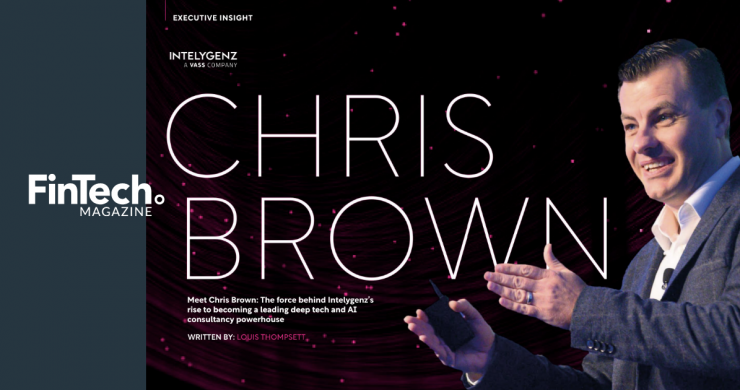How Can a Tech Company Reduce Its Carbon Footprint?

Tackling climate change is one of the biggest challenges faced by the world today. Though there is undoubtedly a level of responsibility on national governments to protect our environment, there is equal if not more responsibility on both citizens and businesses to do their part in living and working sustainably.
So, how can a global business built on technology such as ours change its behavior and operations to work as sustainably as possible? To answer that question, we analyzed the carbon footprint of our whole organization. Our aim was to measure the volume of greenhouse gases we produce annually and identify ways to reduce it as much as possible. We hope that by taking a look at what we discovered, you can think of ways you to do the same.
Measuring our Footprint
To understand our environmental impact accurately, we used methods that meet a worldwide standard of Carbon Footprint studies*. This approach uses physical flows of analyzed activities to calculate greenhouse gas emissions. To help us, we teamed up with El Cubo Verde, soluciones ambientales S.L. They divided our analysis into three operational scopes. Each were implemented in offices across our two locations: Madrid and San Francisco. Read our Carbon Footprint report to find out what the full results of this experiment were.
Scope 1: Direct emissions
This includes all onsite emissions (like fossil fuel combustion), fugitive emissions (including fluorinated gases from air conditioning equipment) and emissions from vehicle fleets.
Scope 2: Internal indirect emissions
This mainly covers electrical consumption across all operational sites.
Scope 3: External indirect emissions
This includes mobility emissions (like business flights) and energy consumption from other parties tied to the business (including suppliers such as data centres).
What We Discovered
We conducted an extensive review of internal and external documents, including interviews with key Intelygenz personnel. Our findings showed the distribution of emissions across key areas of the business. This included a total greenhouse gas output of 81,346.00 kgCO2e.
Since we don’t use natural gas to heat our offices or use vehicle fleets, these sources recorded low emissions. This is good news, but it does mean that we consume more electricity and have higher mobility emissions as these two factors make up the majority of our footprint.
46.7% Business air travel
49.4% Electricity consumption
Reducing the Impact
To minimize our impact across all three scopes, we’ve outlined some key measures. The goal is to reduce our carbon footprint by at least 15%. These include switching electricity providers to ones that guarantee 100% renewable energy. We are also introducing active light management systems. We will also replace all air conditioning units that emit R22 hydrochlorofluorocarbons. Finally, we are prioritizing video/tele-conferencing overtaking business trips.
Making the effort to analyze our emissions was an insightful exercise. This process is something that will help us contribute to a low carbon economy. By better understanding the main sources of our emissions, we can now make yearly improvements and do our bit to combat climate change. We will also be extending our carbon footprint calculations to analyze more metrics and improve the quality of our data.
Interested in measuring your own carbon footprint? We recommend working with an independent consultant to ensure you are using the latest standardized methodologies. This will help you gather as much useful data from your business as possible. The higher-quality the information used in testing is, the more reliable the results will be. You can reveal the most effective ways you can reduce your impact and work more sustainably.
*Measurement methodologies were conducted using the following sources:
Greenhouse Gas Protocol Corporate Standard (GHG Protocol): developed by the World Resources Institute and the World Business Council for Sustainable Development, the GHG Protocol provides standards and guidance for companies and other organizations preparing a GHG emissions inventory. It covers the accounting and reporting of the six greenhouse gases covered by the Kyoto Protocol — carbon dioxide (CO2), methane (CH4), nitrous oxide (N2O), hydrofluorocarbons (HFCs), perfluorocarbons (PFCs), and sulphur hexafluoride (SF6). The U.S. EPA Center for Corporate Climate Leadership’s (The Center). All data collected and analyzed within this report has followed the World Resources Institute (WRI) GHG Protocol principles of relevance, completeness, consistency, transparency, and accuracy.
GHG guidance based on the Greenhouse Gas Protocol “Direct Fugitive Emissions from Refrigeration, Air Conditioning, Fire Suppression, and Industrial Gases” November 2014, developed by the United States Environmental Protection Agency (EPA).
UNE-ISO 14064-1 from the International Organization for Standardization, a worldwide federation of national standards bodies: The ISO 14060 family provides clarity and consistency for quantifying, monitoring, reporting and validating or verifying GHG emissions and removals to support sustainable development through a low-carbon economy and to benefit organizations, project proponents and interested parties worldwide.
“Conversion factor 2018. Full set”: U.K. Government emission conversion factors for greenhouse gas company reporting (Department for Business, Energy & Industrial Strategy). Last updated 8 June 2018. (Source used for Scope 3: Air Business travels).
Read our in-depth report here

Get the latest roundup of the most important, interesting and stories from the past week. In your inbox every Saturday by 10am.
Related Articles you might like
Key Strategies for Financial Institutions to Unlock AI Value
In the financial services sector, artificial intelligence (AI) is often heralded as a transformative force capable of revolutionizing everything from […]
View Blog PostIntelygenz President Chris Brown Shares Vision to Revolutionize Finance in FinTech Magazine
Intelygenz President Chris Brown was recently featured in an in-depth interview with FinTech Magazine, in which he outlined his mission […]
View Blog PostBridging the gap: From AI concepts to production success
In recent years, the conversation around artificial intelligence (AI) has shifted from theoretical possibilities to tangible realities. As businesses strive […]
View Blog Post

